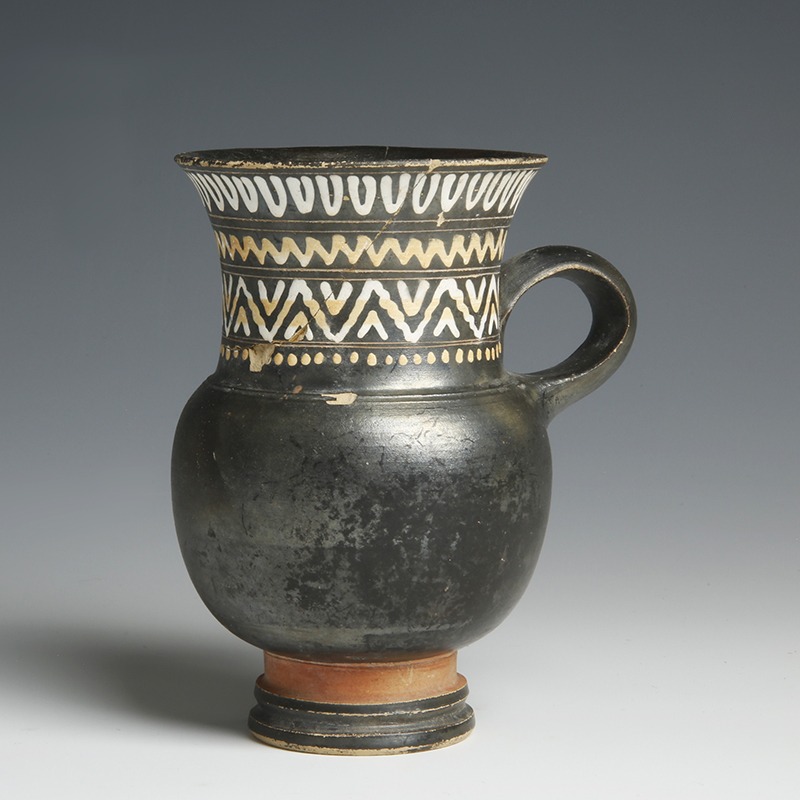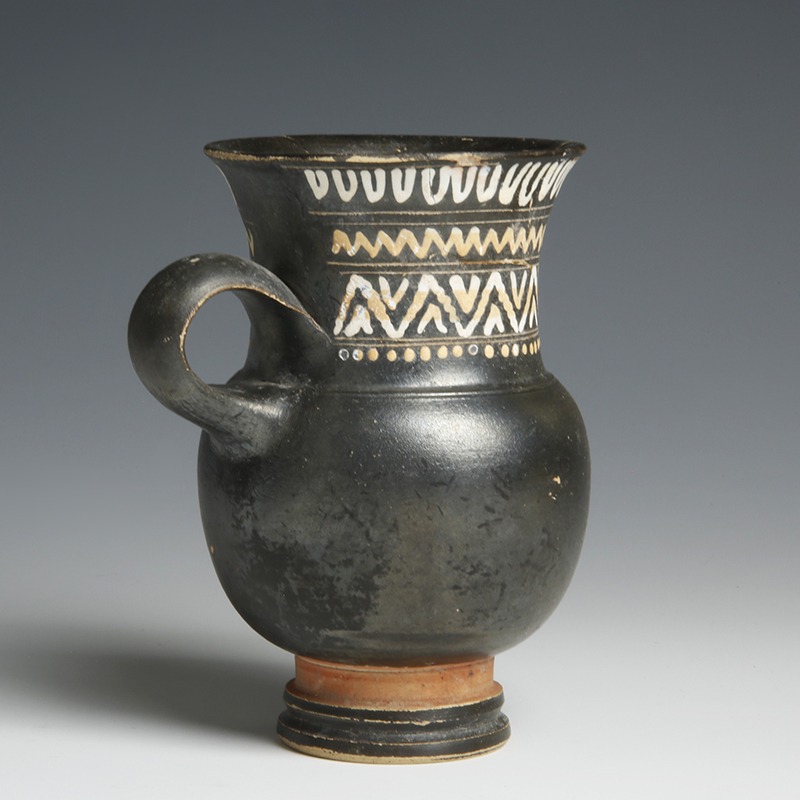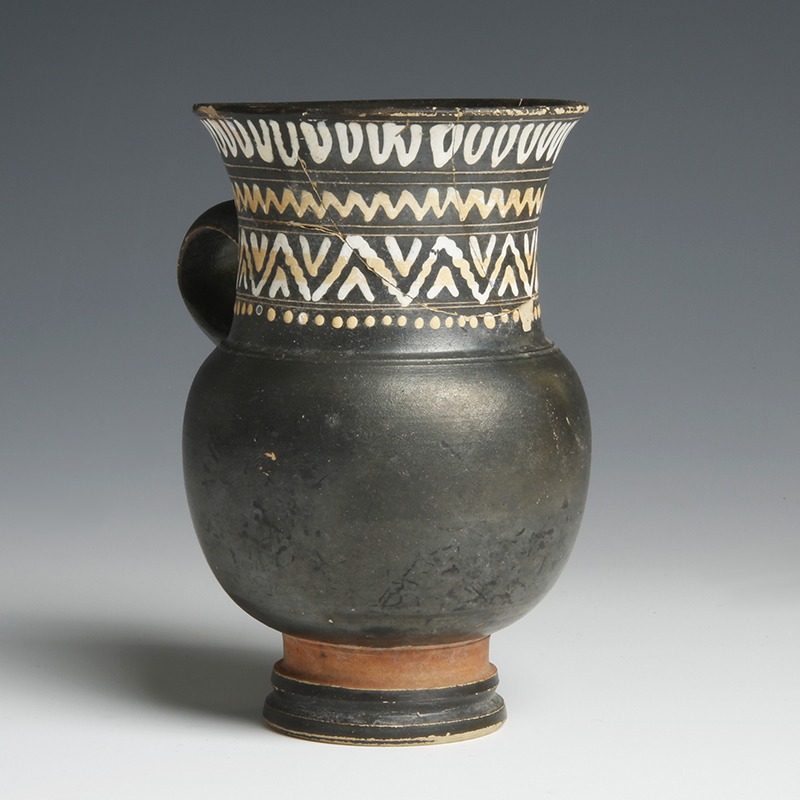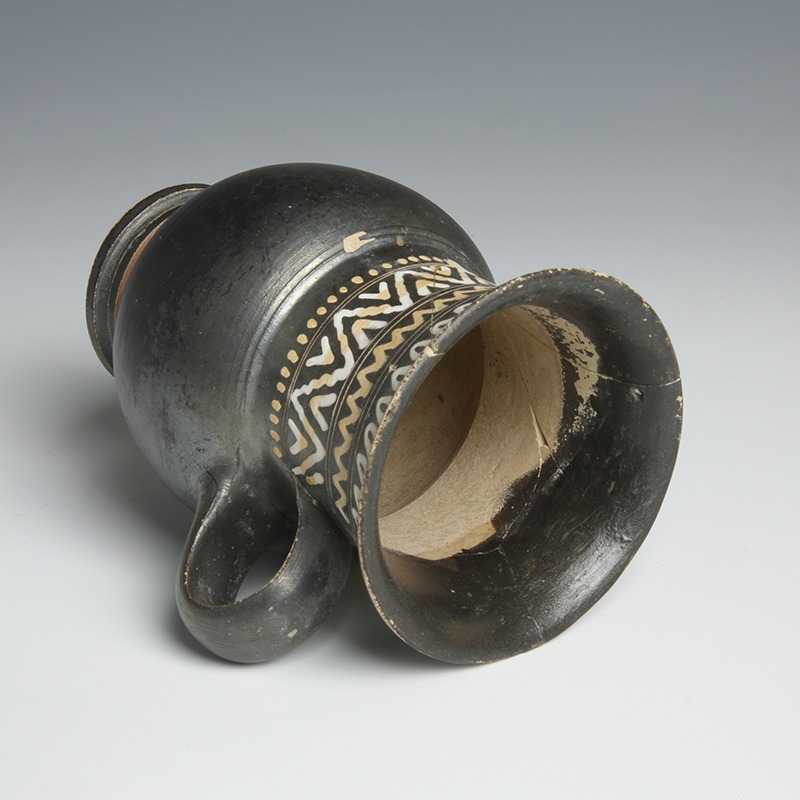The vases attributed to the “Gnathia style” are so termed after the site of Gnathia (present-day Egnazia), which is located on the Adriatic coast of Apulia. The decorative technique used for these vases consisted of the application of colours on a coat of black varnish. Scholars believe that its production most likely was centred around Taras, with primary workshops in Egnathia and Canosa. The quantity and quality of Greek colonial Apulian potters increased significantly following the Peloponnesian War, when Attic exports were drastically reduced. Apulian artistry displays the influences of Ionian (Athenian, Attic) conventions, as well as of Doric (western colonial Greek) styles, whilst maintaining a native Italian aesthetic. Southern Italy was populated by a large number of Greek colonies from the 8th century BC onwards – so much so that the Romans referred to the area as Magna Graecia – ‘Great Greece’. These Greek colonies were instrumental in bringing Greek culture and thought to Italy, greatly influencing Roman literature, philosophy, and material culture in turn.
To discover more about Ancient Greek pottery, please visit our relevant blog post: Collecting Ancient Greek Vases.



